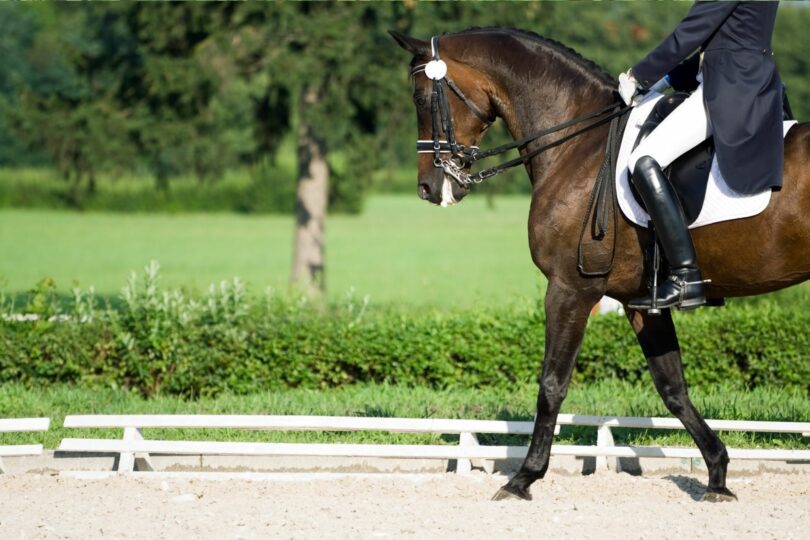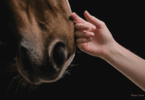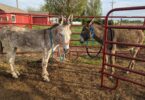Chomping at the bit to buy a dressage horse?
Dressage is a sport shrouded in mystery. Part of this is due to its reputation as a sport reserved for only the wealthiest equestrians. Another component can be credited to the fact that many people, even equestrians, only associate
At its core,
New to the sport? Check out our Horse Rookie Guide to Dressage.
Dressage Horses: What to Look For Overall
Dressage is a partnership between horse and rider. To find your perfect
Do you want to take a horse all the way up through the levels yourself? Or would you be better suited with an advanced horse who has “been there and done that?”
It’s also important to consider your support system.
Then there are the logistical questions. How much time do you have for riding? If you’re juggling work and family responsibilities, you may want to consider a horse with a fair amount of training. Consider your budget, not only for the horse but for any required additional training, boarding, and lessons.
Only after you’ve completed this self-reflection piece should you embark on the journey toward your ideal
dressage horse.
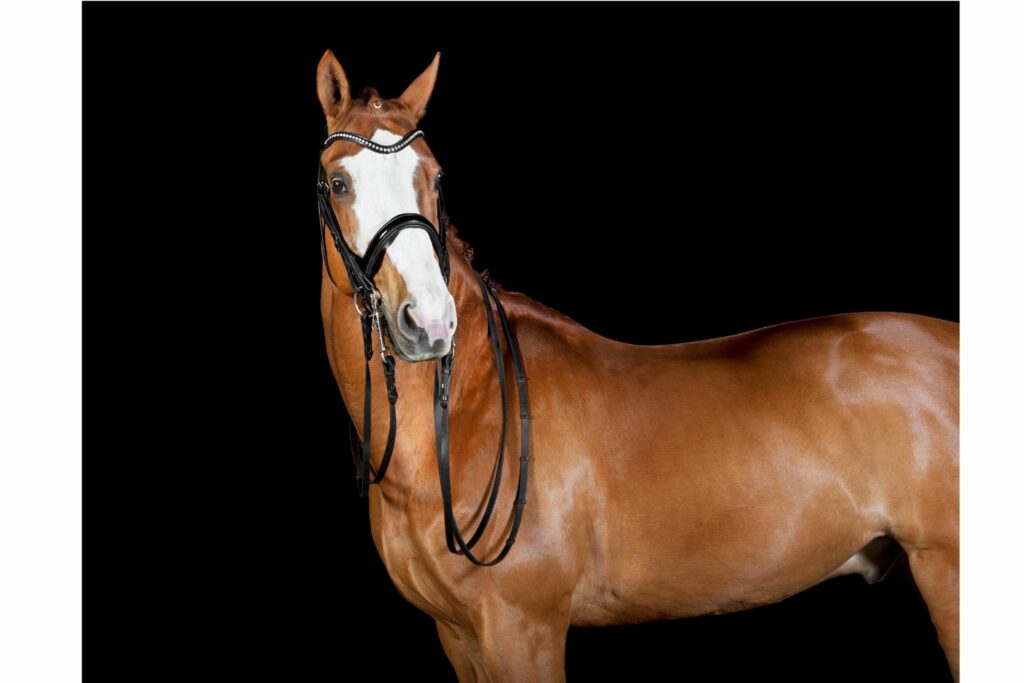
Photo Cred: Canva
How to pick a good dressage horse
Choosing your ideal dressage partner has everything to do with connection between you and the horse.
In her book “The Girl on the Dancing Horse,” Olympic gold medalist Charlotte Dujardin tells the ultimate story of horse and rider fit with the infamous Valegro. When she initially met the now-beloved horse, he belonged to Carl Hester, who had tried to sell him twice. Since Carl found him uncomfortable to ride, Charlotte began riding him.
It was a match made in heaven, and the rest is history.
Whether you’re entirely new to the sport or are a seasoned
Most trainers only want people to succeed and will avoid personality and skill mismatch between their students and prospective mounts.
Being honest about your abilities and what attributes are non-negotiables in an equine partner will help to ensure a successful match.
What are signs of a good dressage horse (or dressage prospect)
Aside from conformation and temperament, one of the most prominent signs of a good
Pay attention to your initial gut reaction because it’s often spot-on.
Did the horse pass a vet check? If you’re interested in moving a horse up through the levels, soundness is crucial. X-rays to verify soundness are an essential component of the pre-purchase exam. Even if you’re not interested in competing internationally, old injuries or other deformities can cause discomfort and prevent the horse from certain movements.

Photo Cred: Canva
Dressage Horses: Conformation Considerations
Dressage is a sport that demands athleticism from both horse and rider. It requires the horse to be free from lameness or other injuries that would prevent free and relaxed movements. By evaluating a horse’s conformation, or how his musculoskeletal system is proportioned, you will have a clue into his potential for
When looking at the horse in a relaxed pose, he should appear symmetrical and balanced. Does he have an overall proportional appearance? In other words, is he made up of equal parts shoulder, back, and hindquarters?
Does he appear taller in the front or in the back?
Feet and legs should be straight, sturdy, and without apparent defects. Again, it’s always wise to opt for a pre-purchase vet exam (with x-rays!) to avoid post-purchase regret.
After evaluating the horse at rest, it’s time to see him in action! When people think about exceptional
Horses with big movement can often excel at all levels of
dressage .
Horses who are naturally big movers often have difficulty with collection, however, an essential component of moving up the
Instead of focusing on how big or fancy the movement is, look for a horse that balances and propels himself from the hindquarters.
Evaluate the horse at the walk, trot, and canter. Ideally, the horse should be fairly relaxed so you can get an accurate picture of his natural state. Keep in mind that it’s much more difficult for the rider to adjust the quality of the walk and canter.
While you want to see clear and balanced rhythms in all gaits, the canter is especially important.
The walk should have a definite 4-beat rhythm, with the hind legs reaching up into the tracks left by the front legs.
At the trot, you should see a clear and steady rhythm. There should also be some suspension.
In the canter, watch to see whether the horse uses his hindquarters for propulsion and balance.
Confirmation can be tricky to evaluate, but it gets easier with a bit of practice. If you’re new to the sport, I highly recommend finding a
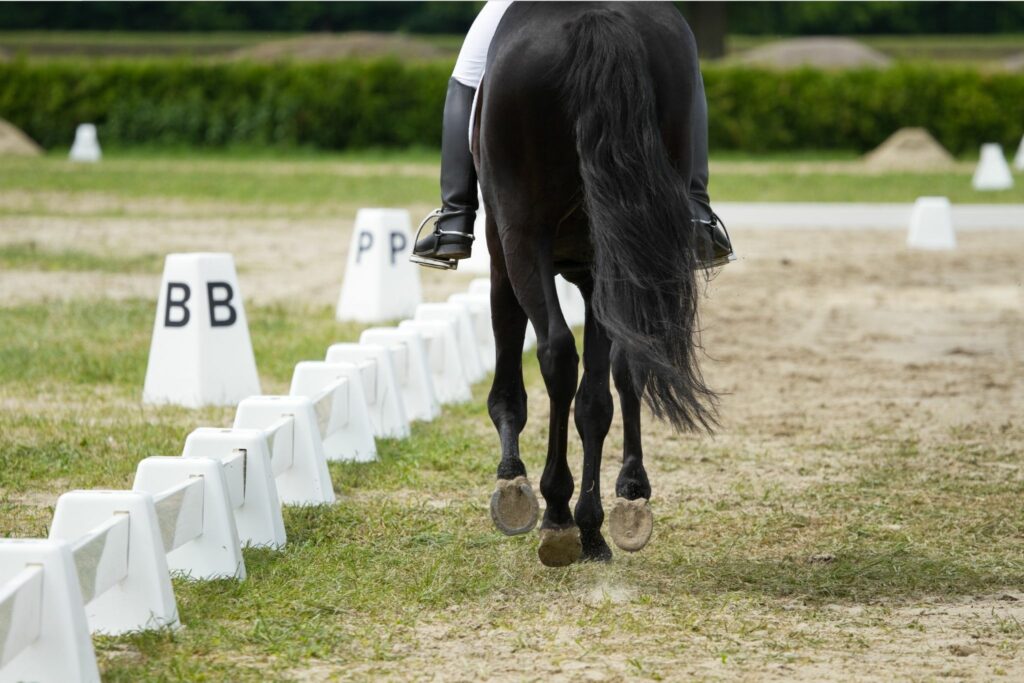
Photo Cred: Canva
Dressage Horses: Temperament Considerations
Aside from the physical prerequisites, you should consider how the horse’s temperament meshes with your own. Some riders prefer a more energetic mount, while others prefer the quiet confidence of a bombproof schoolmaster.
Dressage presents enough of its own training challenges without adding personality conflicts to the mix.
Dressage horses should be intelligent and enjoy working. They should be relatively trainable and eager to please. If the horse is young or not yet started under saddle, research its bloodlines as temperament is a strongly heritable trait.
Even if the horse’s conformation is not ideal, a kind and willing partner improves your overall experience of the sport. Never underestimate the importance of temperament in choosing your equine partner.
Horse Breeds to Consider for Dressage
Although certain breeds dominate the top levels of the sport, most horse breeds can excel in at least the lower levels. If you visit a local dressage show, you are likely to see a mix of Quarter Horses, Thoroughbreds, and Paints. You will probably even see rescue horses of unknown origin, all vying for top scores.
Popular Breeds for
- Dutch Warmblood
- Oldenburg
- Hanoverian
- Danish Warmblood
- Andalusian
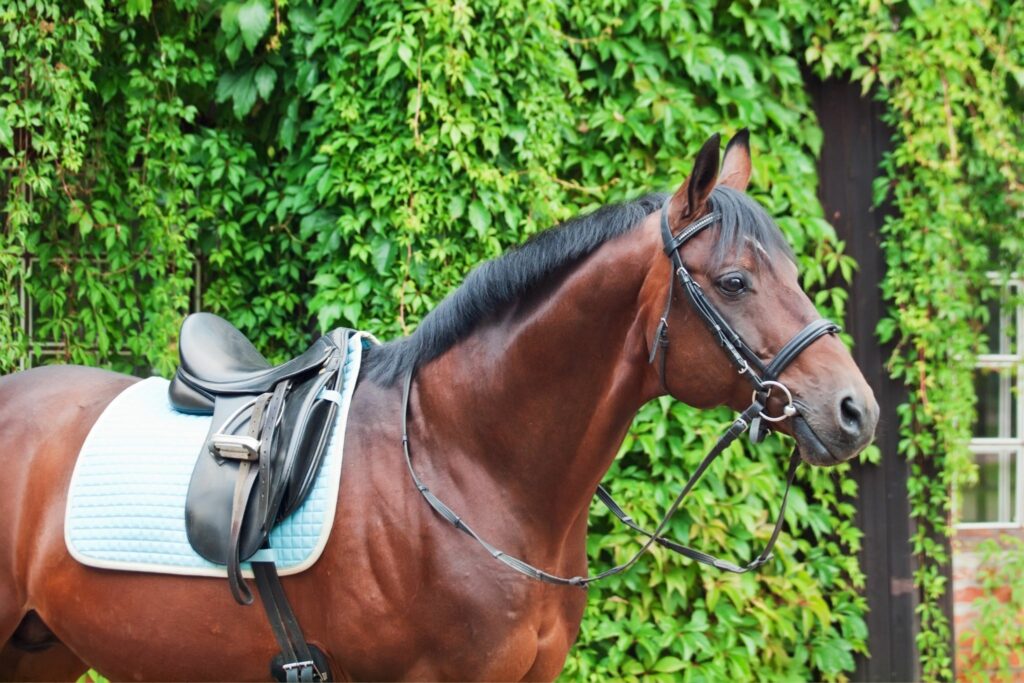
Photo Cred: Canva
What breeds of horses are used in Olympic-level dressage ?
Horses competing in Olympic-level
Approximately 50% of horses competing at the Tokyo Olympics in 2021 were, in fact, Dutch Warmbloods.
The Hanoverian, Westfalian, and Trakehner breeds were also represented, as was the Lusitano at this and previous Olympic games.
What breed is most commonly used for dressage ?
The
Draft breeds, including the Shire, Percheron, and Clydesdale, are known as “coldbloods” due to their more mellow temperament and origination from colder climates.
Conversely, horses such as the Arabian and Thoroughbred are known as “hotblood” due to their more reactive nature and origins in warmer climates.
The term “warmblood” remains confusing because several different European registries exist. In many cases, the term does not refer to one distinct breed as it would to a Quarter Horse or a Thoroughbred. This contrasts with purebred registries, which typically include horses strictly based on parental lineage. Inclusion into a warmblood registry for breeding purposes generally requires an examination and approval by the organization.
There are many different types of warmbloods, such as the Danish, Swedish, and Dutch Warmbloods. You may have also heard of the Hanoverian, Oldenburg, or the Holsteiner. Regardless of the type, warmbloods are not always well-suited for beginner or amateur riders due to their lofty movements and notoriously “hot” temperaments.
Fortunately, a vast range of horse breeds are suitable for this sport!
Dressage Horses by Level
There are a few slight differences in suitable
What’s the best horse for the dressage beginner
Any horse with a kind temperament and decent conformation can be used for beginning riders. It is typically helpful if the horse has some previous
It’s also beneficial for the beginning rider to work with a trainer regularly because it’s much easier to correct minor riding errors in the beginning than to go back and fix things down the road.
What’s the best horse breed for dressage and jumping?
Thoroughbreds are an excellent option for those interested in both
Can any horse do dressage ?
As long as the horse does not have previous injuries or significant conformation issues, they can do
Sports such as reining, Western pleasure, eventing, and even ranch riding require clear and consistent communication and optimal body mechanics, principles which are central to
Frequently Asked Questions
Q: Who is the best dressage horse in the world?
According to the FEI, the top-ranked horse in the world is a 14-year-old Trakehner mare named TSF Dalera BB. Dalera and German rider, Jessica von Bredow-Werndl, earned a team gold medal for Germany at the Olympics.
Q: Are Thoroughbreds good for dressage ?
Yes! Their athleticism and competitive nature lend this breed well to sports such as
Q: Are Arabians good for dressage ?
Arabians are another breed that excels at
Q: Are Friesians good for dressage ?
Absolutely! Also growing in popularity within the sport are Friesian crosses, commonly known as Friesian Sport Horses. This breed is a cross between a Friesian and a warmblood. Friesian Sport Horses are athletic and generally known for an even-keeled temperament, making them especially popular among beginning and amateur riders.
Q: Are Quarter Horses good for dressage ?
The Quarter Horse is a popular breed for all-around use, especially with
Q: Are Andalusians good for dressage ?
Yes! Andalusians are typically well-suited to the sport.
Q: Are Shire Horses good for dressage ?
Shire Horses can excel in the lower levels of
Q: Are Gypsy Vanners good for dressage ?
Between their beauty and docile nature, Gypsy Vanners are a great
Q: Are Clydesdales good for dressage ?
Although Clydesdales are another draft breed with enormous size, they also can do well in the sport.
Q: Are Irish Sport Horses good for dressage ?
A combination of Irish Draught Horses and Thoroughbreds, the Irish Sport Horse can excel in the
Parting Thoughts
While at first glance it can seem intimidating,
P.S. Enjoy this article? Trot on over to:
- The Best Dressage Bridles
- Dressage Circle of the Aids: A Simple Explanation
- 7 Best Non-Slip Saddle Pads That Actually Stay Put
- 8 Best Horse Bridles by Use (Trail, Jump, Western, etc.)
- 7 Ways to Wow Judges & Improve Your
Dressage Scores - What Are the Levels of
Dressage ? - 3 Best
Dressage Boots for the Perfect Leg Position - 9 Best English Saddle Pads (Dressage, Jumping, All Purpose)
- 3 Best
Dressage Boots for Horses Moving Up the Levels - 4 Dressage Fashion Trends & Salute-Worthy Styles
Sources
- 3 Top Tips for Choosing a Dressage Horse (fei.org)
- DR (usef.org)
- How to buy your perfect dressage horse – Horse & Hound (horseandhound.co.uk)
- Ask the Vet: Pre-Purchase Exam – Horse Illustrated
- Conformation Clinic: Choose the Solid Dressage Horse – Expert how-to for English Riders (practicalhorsemanmag.com)
- Judging Horses – Conformation Classes – Extension Horses
- What to Look for in a Dressage Horse – Expert advice on horse care and horse riding (equisearch.com)
- Horse breeds for dressage: which breeds are most likely to reach the top? (horseandhound.co.uk)
- Dressage: The Ultimate Guide (fei.org)
- The best dressage horses in the world right now: check out the top 10 (horseandhound.co.uk)
- FEI Dressage World Ranking | FEI.org
- Gypsy Horse — Full Profile, History, and Care (thesprucepets.com)
- Here Come the Arabians – Dressage Today
- Dressage – AQHA
- Friesian Sporthorse Breed Profile (thesprucepets.com)
- Selecting an Andalusian for Dressage – Dressage Today
- The Many Faces of Dressage: A Clydesdale’s Perspective | YourDressage.org
- Irish Sport Horse Breed Profile (thesprucepets.com)
- Bryant, J. O. (2006). The USDF guide to
dressage . Storey Publishing. - Dujardin, C. (2018). The girl on the dancing horse. Trafalgar Square Books.
- Savoie, J. (2011). Jane Savoie’s
Dressage 101: The ultimate source ofdressage basics in a language you can understand. Trafalgar Square Books.

